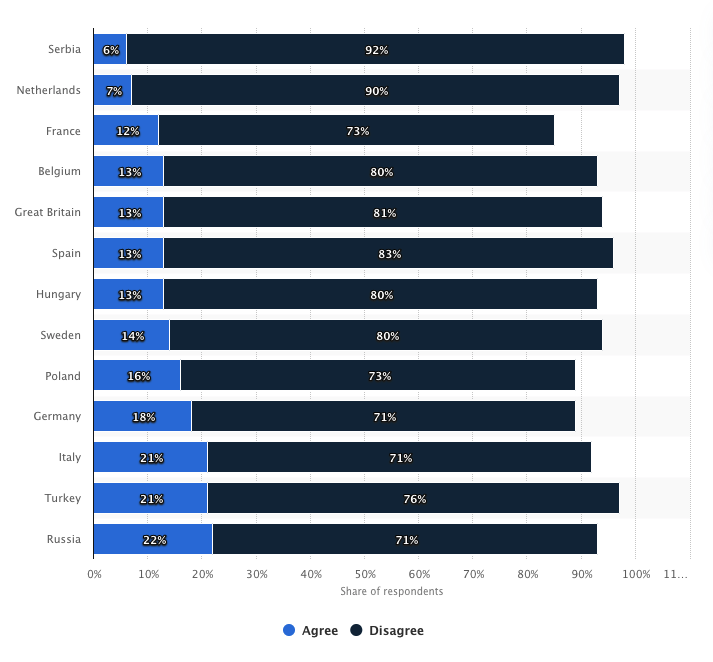Is Your CEO Socially Distancing From A Hybrid Working Model?
Sep 07, 2021
By Simon Lunt
I was sitting with a CEO in a meeting a few weeks ago and notwithstanding the novelty of it being face to face (at a distance of course), something other than the stinging sensation of the hand sanitiser in reception struck me...
We were discussing their sales and marketing team members, one of whom happened to be the CEO’s son, and we were analysing some anonymous metrics. One of the graphs showed a particular team member was regularly working fewer hours in the office than others. The CEO’s response to those metrics (he knew who it was) was rather more visceral than to the other numbers and graphs in the data pack and he made the following comment:
“At his age, I’d be in at 7:30, working through my lunch and I’d be the last one out of here. But he often turns up at 9:30 with his mother, takes a full one hour lunch and is gone by 5:10. I just don’t understand it”.
The variables and reasons behind this school of thought were whizzing around my head on my drive home. But it is important, before I share them with you, to point out that his son’s performance statistically was excellent.
The Hybrid Generation
The example I talked about with the CEO and the “coasting” son demonstrates that attitudes towards work vary between generations. The CEO held the view that putting hours in at the office is essential to proving your commitment and getting results. His son, however, believed that a healthy work/life balance was important and that this was how he was able to achieve his excellent performance.
Since 2020, millions of employees have experienced home working so it should come as no surprise that more of us are keener than ever to build that into our new normal. A Deloitte study and article from late 2020 states: “Twice as many under-35s want permanent flexible working post-pandemic, compared to over-55s.” Deloitte also recently agreed to let their workforce choose their own working patterns as 90% of them wanted some kind of flexibility.
When it's done effectively, hybrid working can serve to offer the perfect recipe of less work, less stress, and more energy for you to achieve even better results.
Caring And Career
But not all companies are as forward-thinking as Deloitte. Nor are they as open to listening to employees requests and the data proving the benefits of flexible working. Men are often still perceived as the breadwinners for their families so when home/life becomes more complicated, the woman in a heterosexual relationship is pressured to be the one who picks up the slack at home so the man can continue to work at full capacity.
What percentage of people in Germany do you think would agree with the following statement if asked in December 2019?
“A man who stays home to look after his children is less of a man”.
You could be forgiven for reading that statement twice to check that you read correctly. This was a question posed by Statista in several countries and out of 1000 people in Germany, 18% agreed with it. Does that shock you?
Even in countries such as the UK and France that are broadly seen as having relatively forward thinking attitudes to equality, the numbers were still 13% and 12% respectively. Broadly speaking, between 1 in 10 and 2 in 10 people in these European countries are not just agreeing with this statement but also reinforcing other generalisations such as “a woman’s place is in the home.”
A CEO’s Perspective
For Founder CEOs, the business is “their baby.” They nurtured it from a fragile birth, shaped it into what it has become today and feel proud of the fruits of their labour, which sometimes makes it difficult to be objective when it comes to overhauling previous practices and policies that always worked before.
Custodian CEOs are essentially “holding the baby,” accountable to a founder, board of directors and/or shareholders. Answering to a variety of stakeholders can be even more challenging. The CEO may not have the final say in significant policy matters and their every move is governed by their duty to ensuring profits and dividends. Therefore, introducing a hybrid working model has to make sense financially and appeal to their superiors.
While many companies have a percentage of the workforce who conduct some work from home, this hasn’t always been “the norm” in most industries and has been forced by the pandemic. It is likely that a hybrid working policy does not formally exist yet, which presents the challenge of convincing CEOs of the business case. It’s important to understand the motivations and obligations of your CEO if you want them to agree that a hybrid working policy is the right move.
People Management
The recent open letter sent to Brewdog from ex-staff members shows that a multitude of people management fails and a toxic work culture can be hiding behind clever PR and good overall company results.
Not all CEOs are good at managing people. Some CEOs are exceptional from a corporate perspective and show a level of focus and determination that only exists in a small percentage of executives (or bad 80’s action comedy films) and will span across many or all functions of a business. But this doesn’t always mean that their people management skills are great.
Of course, these two things are not mutually exclusive. But numbers and dividends can blinker a board of directors or a CEO and opportunities to do things differently can be missed.
I myself have sat on a board that was guilty of being so intent on delivering a strategy that we forgot to listen to what our people were telling us. This resulted in the release of a number of products that essentially failed and a mutiny from a design team - painful lessons from mistakes that could have been avoided if we’d have been collectively better at listening. In some instances and quite shamefully in retrospect, we didn’t even stop and ask.
It’s Tough at the Top
For balance, I believe it is important to acknowledge that being a CEO is tough at times. And this piece is in no way intended to highlight the “worst in breed”. How to navigate through a global pandemic wasn’t featured in most business plans. Even those with enough foresight to have a disaster recovery protocol could not have foreseen what has essentially been a global shutdown for over 12 months.
So a level of agility that has rarely been seen outside of Silicon Valley was required by every CEO across the world in 2020. Some flourished due to good fortune and an excellent product - take Eric Yuan of Zoom as an example. Although even increasing your growth by 400% will no doubt have presented many “good headaches” in the form of growing pains. But examples like that were the exception.
It is therefore understandable that while CEOs attempt to balance the books and look into an ever-murky crystal ball to forecast the months ahead, they can be somewhat forgiven for viewing the workforce’s cries for a more flexible post-covid working pattern as noise and a “nice to have.” They may feel they have bigger fish to fry - in the short term at least.

Presenteeism & Weak Management
Most CEOs will delegate their people management, whether they’re good at it themselves or not. So the next tier down is often empowered (or at least expected) to manage the “people side of things”.
But many managers are good at what they do operationally but aren’t equipped to succeed in a management role - leaving the CEO with the worst of both worlds. For example, the best salesperson is promoted to sales manager. The CEO loses their best salesperson to management, and also gets a below-par sales manager with a poorly managed, potentially demotivated, underperforming sales team. Buy one get two free if you like.
Therefore quite often poor managers (through no fault of their own) create a culture of presenteeism, focussing on the wrong things, including draconian timekeeping and a 9-5 culture that simply doesn’t suit a lot of modern families. Are these work cultures ready for a new hybrid working model? Possibly not. They have a lot of other work to do first.
These managers sometimes mirror their own superiors and might report directly to a CEO. So if their bosses expect them to be in from dawn until dusk, take a ten-minute lunch at their desk and “pee on your own time” then it is likely that this will cascade downwards and remain the culture. If you’re here then you’re controlled and if you’re controlled then you’re working and if you’re working then we’re getting our pound of flesh from you. Awful, but still very common.
Remember Pre-Pandemic Desired Working?
So if we cast our minds back to Autumn 2019 before the world turned crazy, there was already a desire for a different way of working. Since then life has become even more complicated, the cost of living is rising, and it often remains the case that both parents in a family need to work, at least in some capacity. But in order to do this, the parents require some form of flexibility.
I remember years ago being afraid to ask for two hours as an early lunch one Christmas so that I could watch one of my children in their school nativity as my “manager” was renowned for making people pay when it came to attempting any kind of work/life balance. The same manager once reluctantly let me pop home as a heater had started a small fire in my conservatory and my wife was shaken up.
These examples are not as uncommon as you might think. Most people have a story about a manager or CEO who simply didn’t get or didn’t want to understand that parents are a huge asset to a company.
Life can be that little more complicated when you add children to an equation. But that doesn’t mean Parent + Flexibility = Ineffective. It is more like Employer + Flexibility = Productive Employees + Staff Retention + Pleasant Working Culture. Not quite as catchy as E = MC2 but you get the idea?
If you’re still not convinced that many parents feel awkward about even asking about any form of work/life balance, I challenge anyone who has been on Teams and Zoom calls over the past 18 months to tell me that someone on a call hasn’t apologised for the potential noise their children might make during the meeting. The potential! Not even as it happens.
How Can You Convince Your CEO to Think Differently?
This is where Thriving Talent comes in. We are hosting a FREE webinar on Making It Work: Planning For Hybrid Working Success on Thursday, 23 September 2021 at 12:00 CEST. Click here to book your seat!

You will learn how to assess your company's capacity to support hybrid working and recognise the present opportunity to advance diversity, equity, and inclusion.
There will also be opportunities to share knowledge with other companies on their approach and policies, as well as brainstorm ideas to be in line with your organisation's values and culture.
If you want to skip the webinar and just start working with us, that’s fine too.
We won’t try to immediately sell the benefits of hybrid working to your CEO or senior management team. We’ll take time to listen and understand, provide working examples and objective facts, and then present some of the ways in which it might work for your organisation.
So if you currently have no dealings with us then the best place to start is a discovery call. We’ll have a chat with you about the current situation and go from there. All you have to do is get in touch.
And if you’re an existing client, it might be a case of weaving something into the training or work we’re currently doing with you, or opening up a new workstream to tackle the situation head on.
Whichever camp you fall into, don’t worry if your kids make an unexpected appearance in the meeting or your cat walks across the keyboard. We’re all human beings here.
Stay connected with news and updates!
Join our mailing list to receive the latest news and updates from our team.
Don't worry, your information will not be shared.

